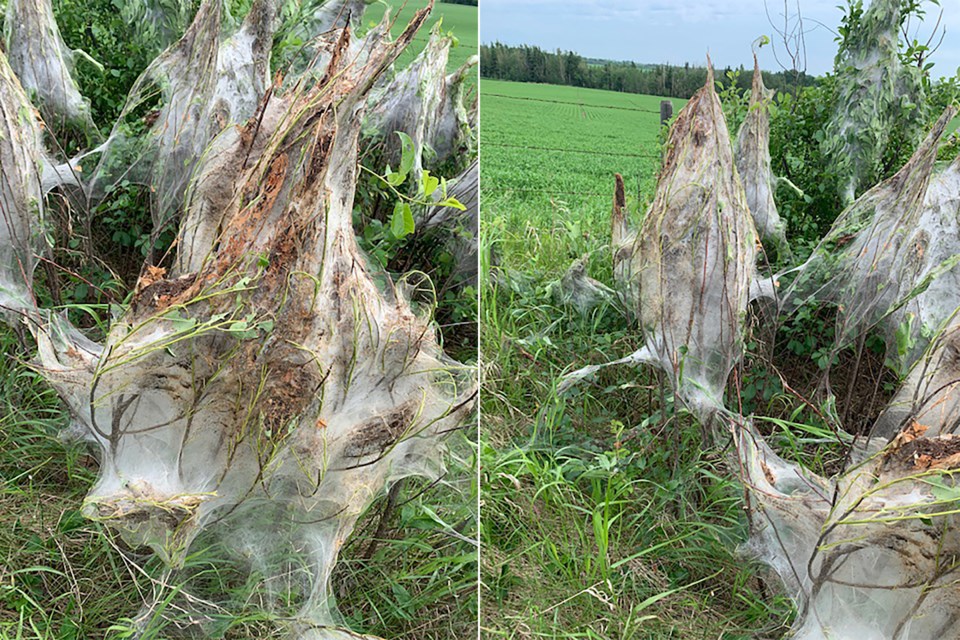LAKELAND - A sight that can be seen along the side of a road within the County of Two Hills has drawn a bit of attention and curiosity.
Photos and video are being shared on social media, showing clusters of webbing along a fence line. Some even show insects within that webbing.
Lakeland Today reached out to the County of Two Hills agricultural fieldman and assistant fieldman to see if they had received any calls or information about the odd sight.
Sara Miller, assistant agricultural fieldman with the County of Two Hills, confirmed the municipality had been notified by an area producer about the webbing. She, along with agricultural fieldman Elden Kozak, went out to take their own look Tuesday. Miller supplied Lakeland Today with a few photos, showing the webbing.
Miller said they reached out to a tree specialist and were told the pest was called an "Ugly Nest Caterpillar."
The caterpillars are known to like Choke cherry, Hawthorn, Rose, Wild black cherry and other hardwoods, according to information from Agriculture and Agri-Food Canada.
Dr. Victor Shegelski, lecturer and assistant curator, E.H. Strickland Entomological Museum, University of Alberta, says that while he can't say definitively what the insects are based on the photos he's seen, he and a colleague do agree that the insects are likely Ugly Nest Caterpillars.
When asked if it is uncommon to see Ugly Nest Caterpillars in this specific region, Shegelski says that "On a large scale, like what we are seeing here, this is uncommon - it happens sporadically, so it could be a number of years between outbreaks (population explosions) that are big enough to be this crazy. On a smaller scale, this can happen commonly, it just tends to go unnoticed." Although, he adds, people may notice the ugly nests more often now that they are aware of them.
"As far as that specific region goes, I would guess that it happens on occasion, but I couldn't find any historical records of these caterpillars," said Shegelski. "I think the lack of records is at least partly because they actually don't tend to be too destructive. They make their ugly little nest, eat a bunch of leaves and leave behind their garbage, but they don't often kill the plant they are feeding on. The plant will generally recover by the following spring, so there is some good news here as well."
According to information on the Government of Canada website, "The insect is named after its untidy, nest-forming characteristics. Larvae of the ugly nest caterpillar hatch from overwintering eggs in the spring and may be found feeding throughout May to September. The larvae are yellowish to greenish-yellow with black heads and thoracic shields and range from 20-23 mm in length when full grown. The larvae pupate within the nest during mid-June to September."
Further, "The moths may be present from early July to September, depending on the climatic region. The females deposit their overwintering egg masses on the stem near the ground of host trees. There is only one generation a year of ugly nest caterpillar."



